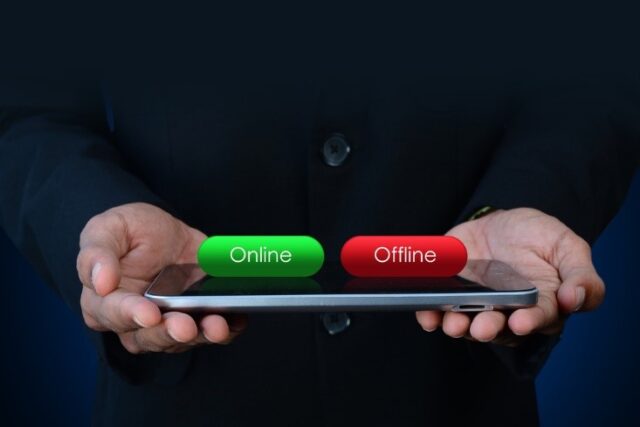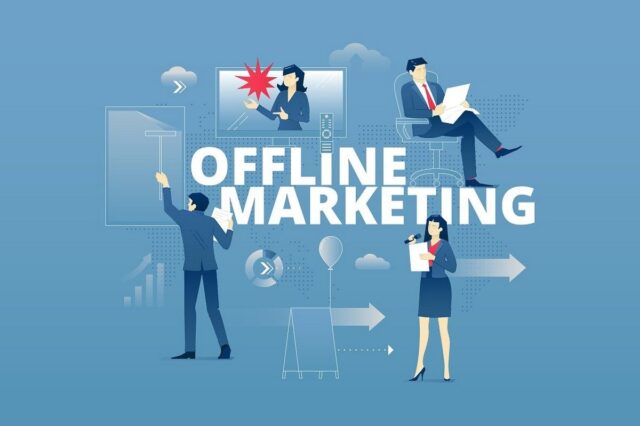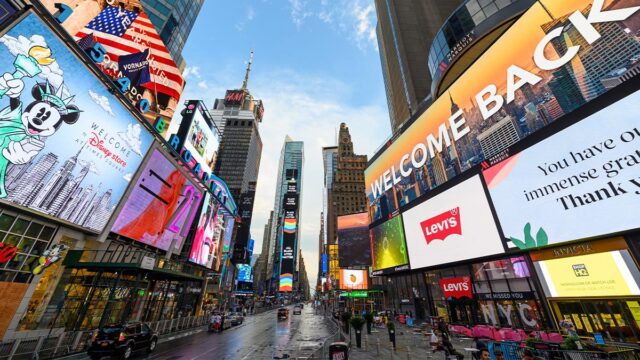
In an era dominated by digital marketing, it’s easy to overlook the power and relevance of offline marketing. But as we’ll discover, its tangible, personal touch remains a potent tool for businesses, even in our hyper-connected world.
If you’re curious to explore further insights into the seamless integration of online and offline strategies, you can delve deeper by visiting this website.
The Power of Tangibility

Offline marketing, at its core, is about creating tangible experiences. These experiences can leave a lasting impression, often more so than a fleeting online ad.
Physicality in Materials
There’s something inherently powerful about holding physical marketing material in your hands. Whether it’s a beautifully designed brochure, a business card, or a promotional item, the tactile sensation creates a connection that digital mediums can’t replicate.
This physicality can lead to longer engagement times, as people take the time to flip through a brochure or admire a promotional item, allowing the marketing message to sink in more deeply.
Sensory Engagement
Offline marketing engages more of our senses. While digital marketing primarily relies on sight (and occasionally sound), offline marketing can engage touch, smell, and even taste. Think about the scent of a new car in a showroom or the taste of a free sample at a food fair.
These multi-sensory experiences can create stronger emotional connections and memories with a brand.
Building Trust through Personal Interactions

Trust is a cornerstone of any successful marketing strategy. While online testimonials and reviews play a role, nothing beats face-to-face interactions for building genuine trust.
The Value of Face-to-Face Conversations
In a world of emails and instant messaging, a face-to-face conversation stands out. It allows for nuances, body language, and genuine human connection. When a potential customer can look a representative in the eyes, ask questions, and get immediate answers, it fosters trust and confidence in the brand or product.
Demonstrations and Live Experiences
Live demonstrations or experiences allow potential customers to see a product in action, ask questions, and even try it out for themselves. This not only builds trust but also reduces the perceived risk of purchasing.
Customer is more likely to buy a product if they’ve seen it work and had their questions answered on the spot.
The Community Impact of Offline Marketing

Offline marketing often has a broader impact on the community. It’s not just about individual consumers; it’s about creating a buzz and a sense of belonging.
Local Brand Loyalty
When businesses engage in offline marketing within their local communities, whether through sponsorships, local events, or other initiatives, they’re not just promoting their products. They’re showing that they care about the community.
This can foster a sense of loyalty among local consumers, who appreciate businesses that give back.
Word-of-Mouth Amplification
While online reviews are influential, word-of-mouth remains a dominant force in consumer decision-making. Offline marketing events or experiences can become a talking point within a community.
When people have a positive offline experience with a brand, they’re likely to share it with friends, family, and colleagues, amplifying the message organically.
Synergies Between Offline and Online Marketing

While offline marketing has its unique strengths, it doesn’t mean it should operate in isolation. Combining offline and online strategies can yield powerful results.
Integrating QR Codes and Augmented Reality
Modern offline marketing materials often incorporate QR codes or augmented reality (AR) features. By scanning a QR code with a smartphone, a user can be taken to a specific webpage, video, or online promotion.
Similarly, AR can bring print materials to life, offering an interactive experience that bridges the gap between the physical and digital realms.
Social Media Buzz from Offline Events
Events, whether they’re product launches, pop-up shops, or trade shows, can generate significant social media buzz. Encouraging attendees to share their experiences online, perhaps with a specific hashtag or incentive, can amplify the reach of the event.
This creates a feedback loop where offline experiences drive online engagement, which in turn can attract more offline participation.
Storytelling in Offline Mediums

Every brand has a story, and offline mediums offer unique ways to tell it.
The Power of Packaging
For physical products, the packaging is often the first tangible touchpoint a customer has with a brand. Creative, eco-friendly, or innovative packaging can convey a brand’s values, story, and uniqueness. It’s not just about protecting the product; it’s about making an impression and connecting with the consumer.
Radio and TV Narratives
While digital streaming is on the rise, traditional radio and TV still command vast audiences. Crafting compelling narratives or advertisements for these mediums can create memorable moments.
The jingles, catchphrases, or stories told can become cultural touchpoints, resonating with audiences and reinforcing brand identity.
Measuring the ROI

In the data-driven age, measuring ROI is crucial. While offline marketing might seem harder to track than its digital counterpart, there are effective methods to gauge its impact.
Coupon Codes and Promotions
One straightforward way to track offline marketing’s effectiveness is through exclusive coupon codes or promotions.
By offering special deals available only through a specific offline channel, businesses can track redemptions and gauge the campaign’s success.
Surveys and Feedback Forms
Post-purchase surveys or feedback forms can be invaluable. By asking customers how they heard about a product or what influenced their purchase decision, businesses can gather data on which offline (and online) marketing strategies are most effective.
Challenges of Offline Marketing in the Digital Age

While this type of marketing offers numerous benefits, it’s essential to recognize and navigate the challenges it presents in today’s digital-centric world.
Overcoming Skepticism
In an age where consumers are bombarded with advertisements, there’s a natural skepticism toward their messages.
Offline marketing, especially when it involves direct interactions, must prioritize authenticity and genuine value to break through this barrier and resonate with modern audiences.
Adapting to Changing Consumer Habits
With the rise of online shopping and digital entertainment, there are fewer traditional touchpoints for offline marketing.
Brands must be innovative, finding new ways to reach consumers in the physical world, whether it’s through experiential marketing, pop-up events, or collaborations.
Innovative Strategies for the Modern Era

The digital age doesn’t mean the end of offline marketing; it means its evolution. Brands are finding fresh, innovative ways to connect with consumers offline.
Experiential Campaigns
Experiential marketing focuses on creating memorable experiences for consumers. Whether it’s a branded escape room, an interactive art installation, or a pop-up dining experience, these campaigns prioritize engagement and immersion over direct selling, leaving a lasting brand impression.
Collaborations and Pop-Up Events
Brands are increasingly collaborating with influencers, artists, or other brands to create unique pop-up events or limited-edition products. These collaborations can generate buzz, reach new audiences, and offer exclusive experiences that drive brand engagement and loyalty.
Conclusion
At its heart, marketing is about connection. And while algorithms, data, and digital platforms play an increasingly significant role, the human need for genuine, face-to-face interactions remains timeless.
Offline marketing taps into this intrinsic desire, reminding us that beyond pixels and screens, it’s the shared experiences, stories, and memories that truly resonate.









